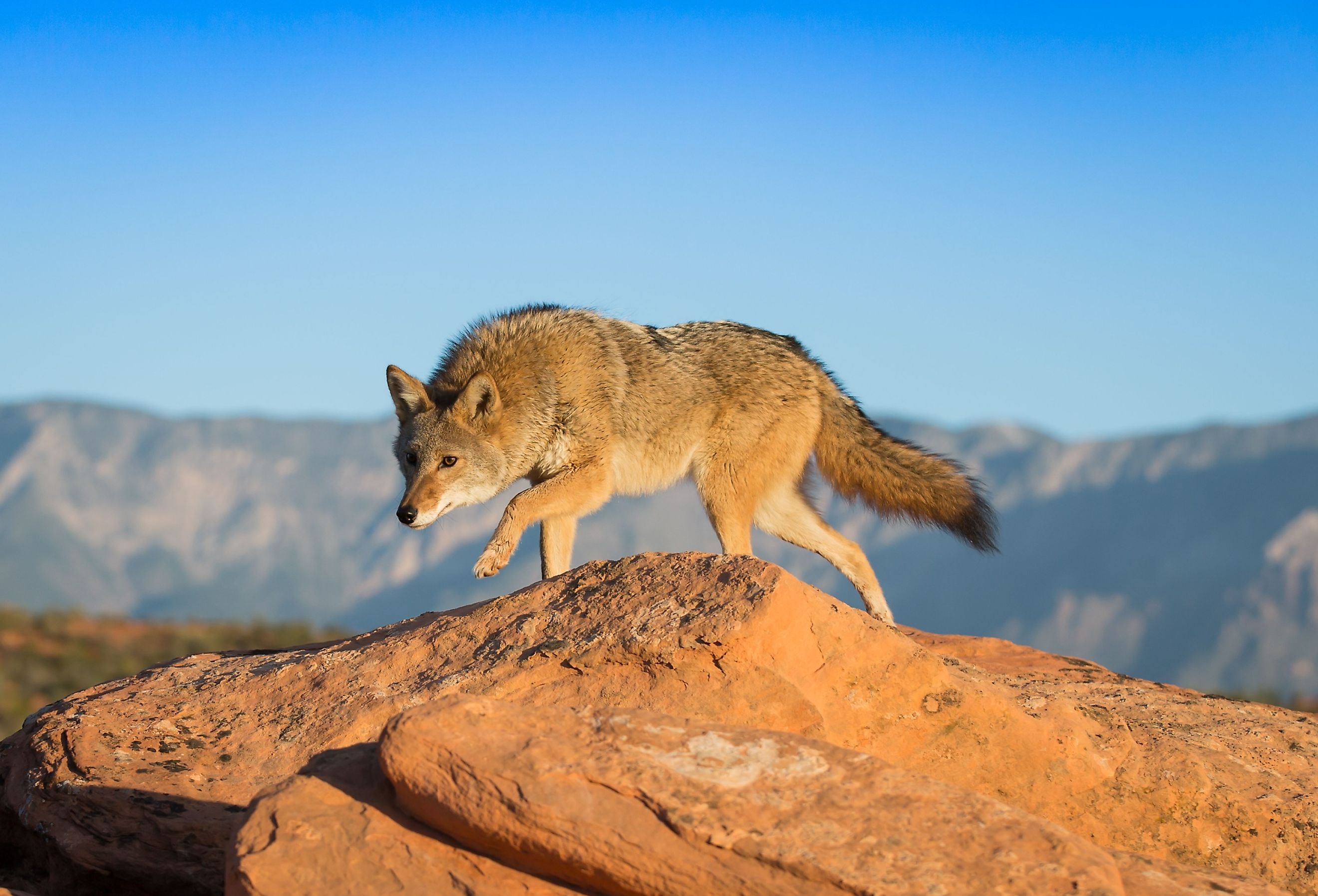
The 12 Deadliest Animals in Alabama
Alabama is known for its natural beauty, rich history, and southern charm. Visitors and residents love being able to hike gorgeous mountain trails and then make a short drive to enjoy the sandy beaches of the beautiful Gulf Coast. However, when exploring the southern Cotton State, it is important to be mindful of its wildlife, as with anywhere one travels. While most of the creatures you come across in Alabama may be harmless, a few pose a threat to humans. Here are 12 of the deadliest animals in Alabama.
Snakes
Alabama is home to several species of snakes. Many of them are not dangerous and may even be helpful; for example, snakes are a great way to keep the rodent population under control. However, some snakes contain venom, and their bite could be extremely dangerous, even fatal, to humans and pets. Over 200 people are bitten by venomous snakes in Alabama every year. Knowing the difference and identifying the danger will help you avoid a potentially deadly situation.
Cottonmouth
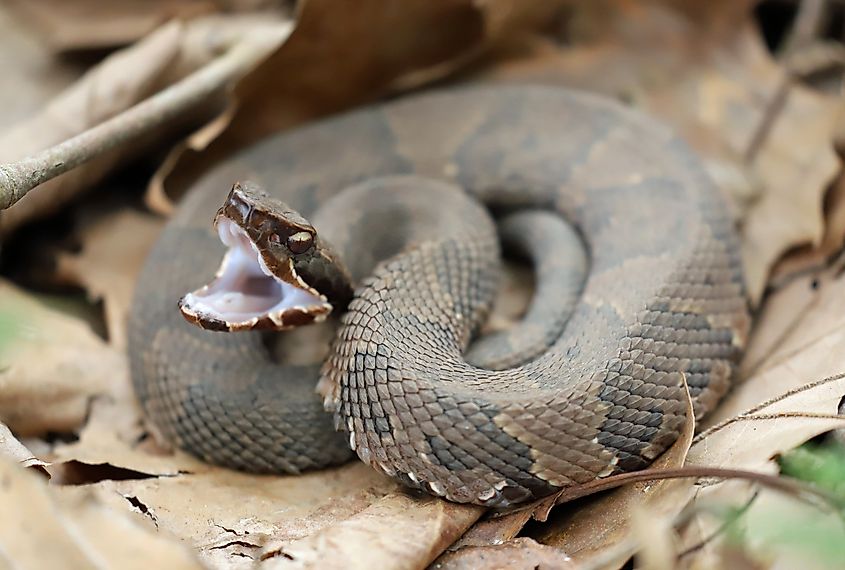
The Cottonmouth snake is also known as a water moccasin. They make their home around bodies of water, which Alabama has an abundance of in its many lakes and rivers. If you come across a cottonmouth in the wild, it will most likely attempt to escape the area. It may be gone before you ever know it is there. However, they can be extremely territorial. If a cottonmouth is being aggressive, you have probably wandered too close to its nest.
Copperhead
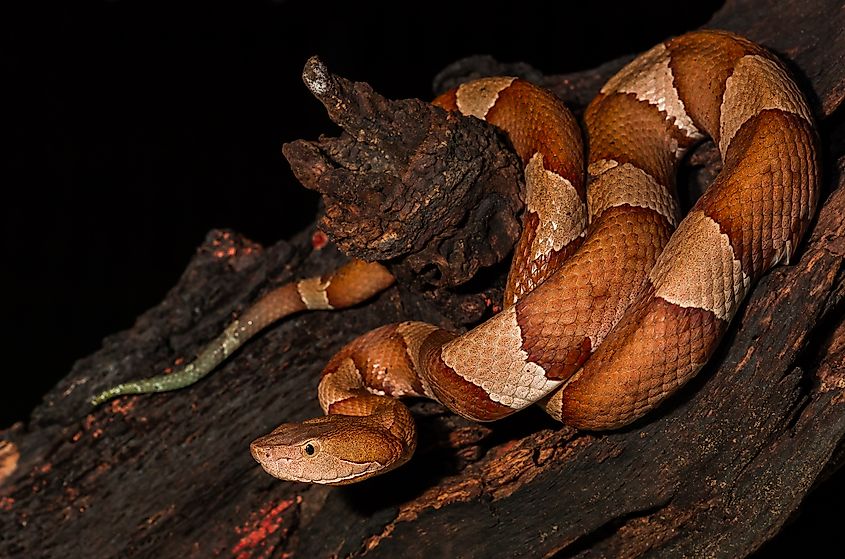
The Copperhead snake is one of the most common venomous snakes in Alabama. As with the cottonmouth, it is territorial. Most people that have had a negative encounter with a copperhead have gotten close to its nest or happened upon it by surprise. A copperhead’s venom is not as potent as some other snakes, but the victim of its bite may experience a lot of pain, swelling, and irritation.
Rattlesnake
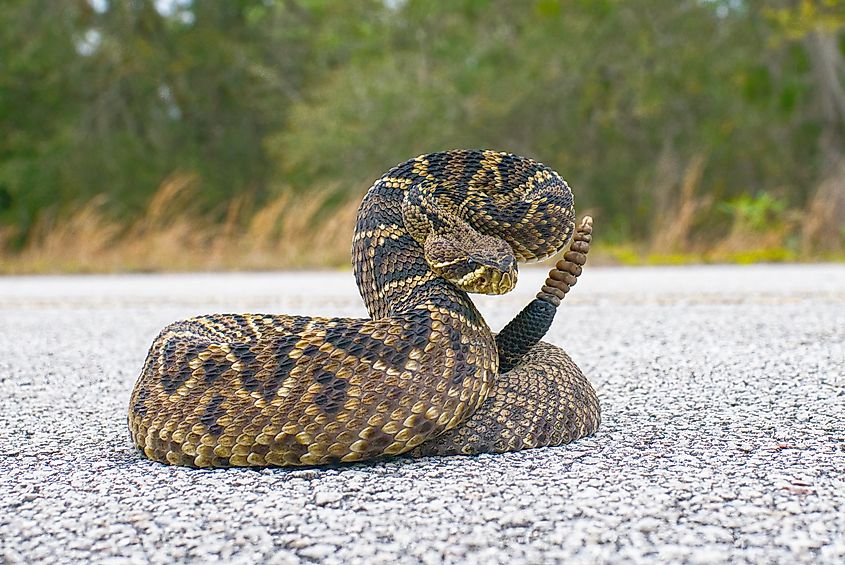
There are a few species of rattlesnakes in Alabama. You will not find them as much as some of the others on the list, but there are enough that you must be mindful of their presence. The good thing about rattlesnakes is their built-in warning system. If you get near them, they have a rattle on their tail that they will shake, letting you know that you are getting near enough to be considered a threat. The sound is distinctive, so if you hear it, you should move away.
Coral Snake

Alabama is the home of a few miles of coastline. While you will find a lot of fish, turtles, crabs, and birds along the shore, you may occasionally find a coral snake. They are shy, making sightings rare. When you do see them, they are easy to identify by their colorful patterns. Their venom is potent and sometimes deadly.
Spiders
Alabama has a lot of undeveloped land covered in forests. With those areas come insects and other small creatures that may find their way into places more populated by humans. Some of those are spiders, most of which pose no threat to humans. However, there are a couple of species that can be dangerous. Knowing what they are can mean the difference between getting away unscathed or having an injury that could potentially affect you for life.
Black Widows
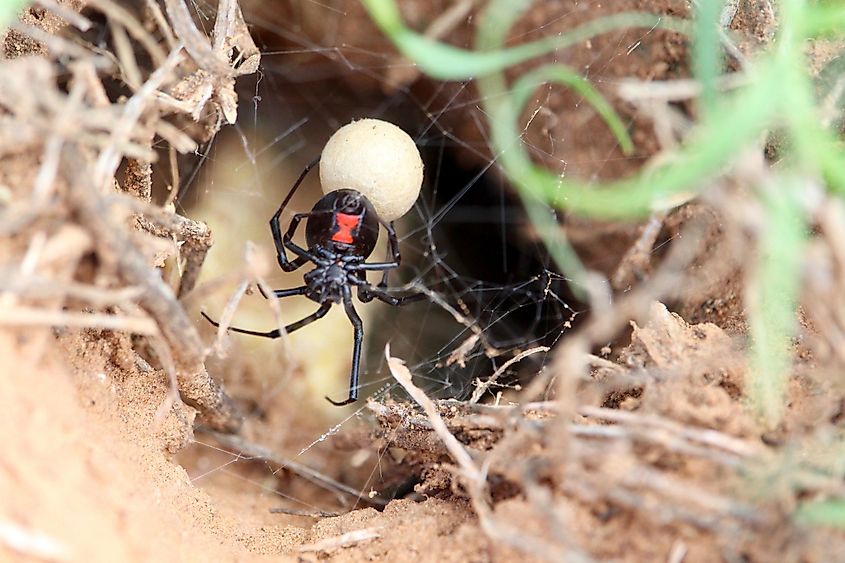
One common dangerous spider is the black widow. They can usually be found in dark and secluded areas, including garages, tool sheds, basements, attics, and firewood piles. When their hiding place is uncovered, they can feel threatened and attack humans for self-defense.
A bite from a black widow is not usually deadly. However, you may experience symptoms such as nausea, cramps, and severe pain around the affected area. People with compromised immune systems could experience more severe symptoms, such as difficulty breathing.
Brown Recluse
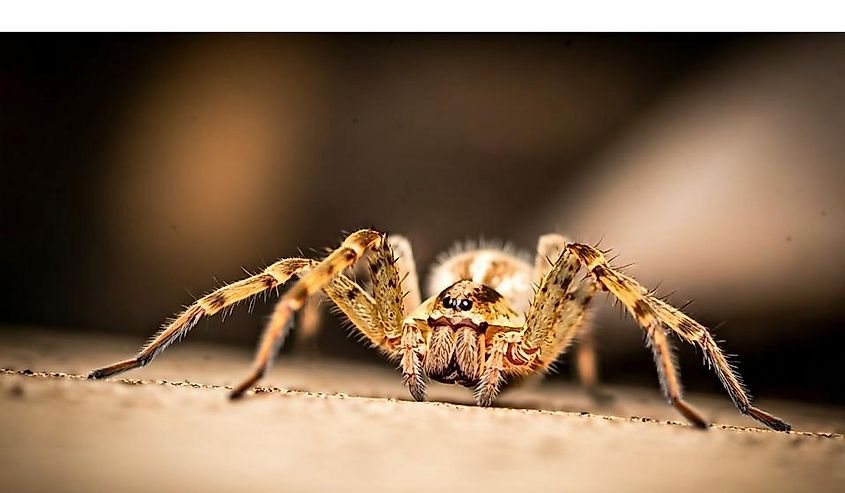
Like the black widow, the brown recluse spider enjoys dark places that are unlikely to be discovered. They prefer to stay alone and out of the way. They have distinctive markings on their body in the shape of a violin. If you see a brown recluse, getting away as quickly as possible is best. The spider will likely try to avoid you but bite if threatened.
Brown Recluse toxin can cause many problems, including necrotic skin lesions, severe tissue damage, and blood flow problems. Their bite is rarely fatal, but children and elderly victims could have more severe cases. If you are bitten by a Brown Recluse or a Black Widow, you should clean the bite area with soap and water, apply an ice pack, and get to the emergency room as quickly as possible.
Mammals
There are many wooded areas in Alabama that are home to many creatures, including mammals that hunt prey for survival. These animals do not seek out humans, but they may feel threatened if they see one. This is especially true when they have their young nearby or if the animal is sick or injured. When going for a hike or camping in the woods of Alabama, always be on alert for the presence of these creatures.
Bobcats
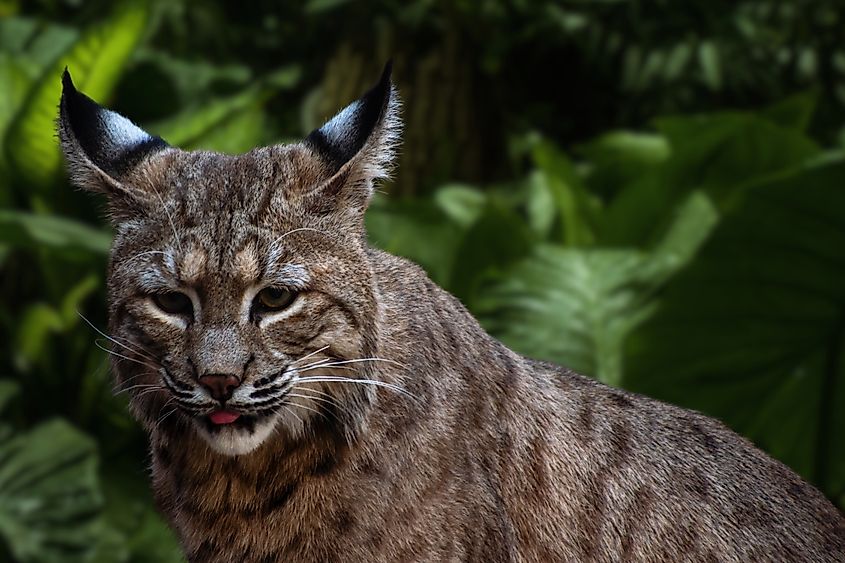
The Bobcat is not a large animal but can be a ferocious hunter and defender of its territory. Usually standing around 24 inches tall, it is a solitary animal that prefers living in forests and mountainous areas. However, it can sometimes be found in more swampy areas. It mostly hunts medium-sized animals such as rabbits, rats, squirrels, and birds.
They have sharp teeth and claws that make them skilled hunters. Those same tools can be dangerous when used in an altercation with humans. A person who a bobcat attacks can obtain serious and life-threatening injuries. If you see a bobcat it is best to back away slowly. If it attempts to approach you, avoid eye contact so the animal does not feel challenged. Also, make yourself look bigger by raising your arms or spreading your jacket open. If the bobcat thinks you are much bigger than it is, it may back off and leave the area.
Black Bears
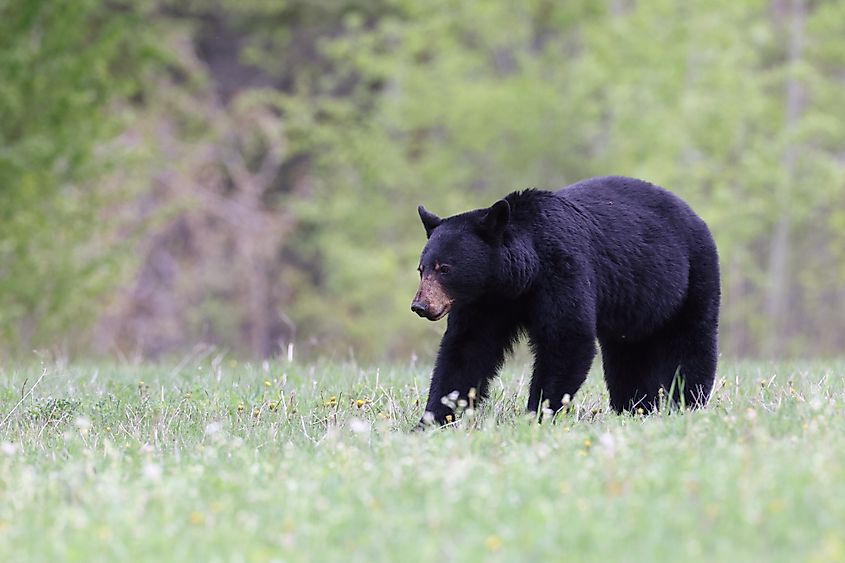
There are other parts of the south where black bears are more common, such as the mountains of Tennessee. However, they often find their way into the northern portion of Alabama. Some black bears have been spotted much further south in the coastal area of the state. They prefer the forest as it has plenty for them to eat. Black bears are good at hunting and foraging and can find a lot to sustain them there. They can be found in wetland areas as well.
Black bears are known to avoid contact with humans as much as possible. They are not usually aggressive, and if approached, they will normally go the other way. However, if they have young nearby or are trying to get food, they may feel threatened by the presence of a human. They have sharp teeth and claws that are formidable tools in an attack that can cause serious injuries that may be deadly. They can also grow to be large creatures and may be able to use their size against you in an attack. If you see them, you should avoid them and go back away.
If attacked by a black bear, you should fight back. Use all of your strength and all available objects. When punching or hitting, aim for the bear’s snout and eyes. If fighting does not deter the attack, you should lie on your stomach and cover your neck. Play dead until the bear no longer sees you as a threat and leaves the area.
Wild Boars
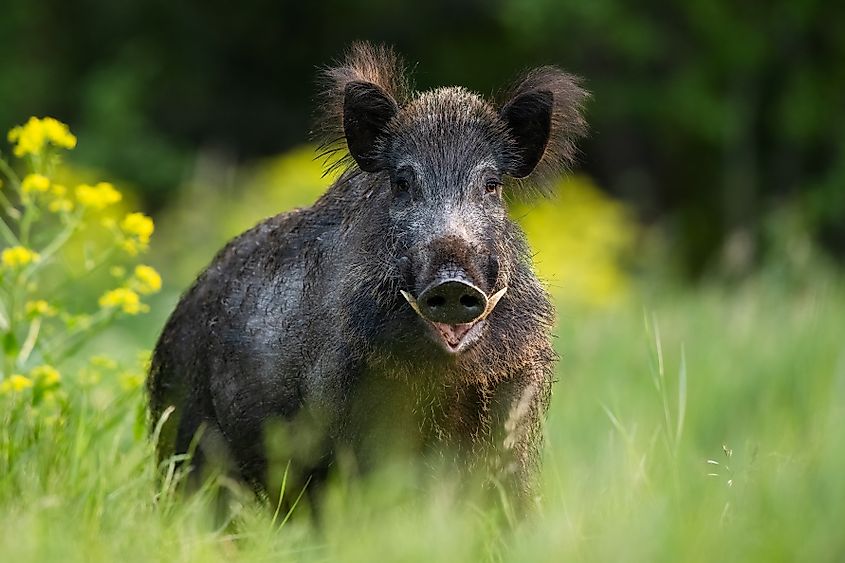
A wild boar is also known as a feral hog. They are muscular animals that can grow to as much as 400 pounds. They are covered in coarse black or brown fur and have large tusks up to four inches long. They are mostly foragers, living off plants, insects, and mushrooms they find in the forest or wetlands where they are typically found. Sometimes, they are known to eat small animals such as rodents or amphibians.
Wild boars are unpredictable and very aggressive when they feel threatened. Leave the area if you see signs that they have been in the area, such as their waste, tracks, or markings on trees where they sharpen their tusks. If you are attacked, fighting back may cause the animal to give up and run away. Avoid running from a wild boar because it may provoke you to chase you, and they can be fast creatures.
Coyotes
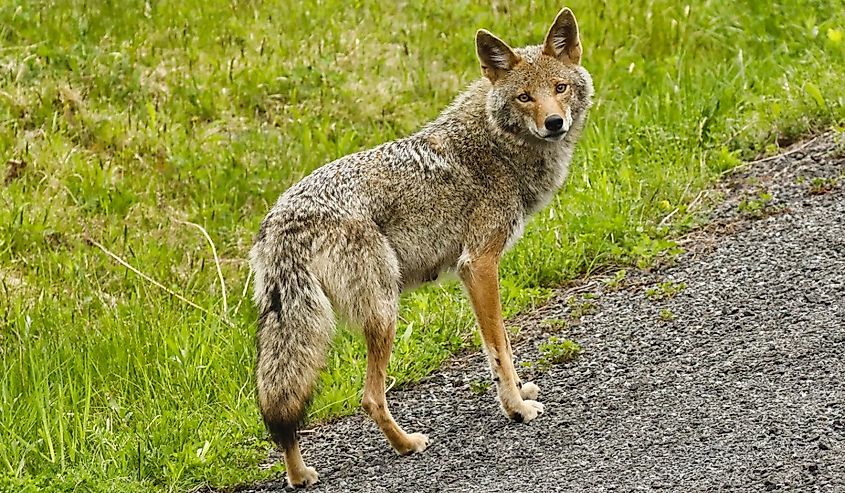
Coyotes are medium-sized animals that look like dogs with a more slender, long body. They live in wooded areas throughout the state of Alabama. They are also known to stay close to urban and suburban areas to make foraging for discarded food easier. They have a bittersweet relationship with humans because they have a role in controlling rodent populations, but they can also be dangerous if you come across them in the wild.
Coyotes can become accustomed to humans' presence, making them more likely to come into populated areas. Unfortunately, it also makes them more bold when they come in contact with you. You can avoid contact with them by securing garbage and pet food if you are in an area where they have been seen. Keep your pets indoors and only let them out if you are with them. If you see a coyote, make yourself look bigger by holding up your arms. Seek shelter as soon as you can. If the coyote does attack you, fight back as hard as possible. This may deter the animal enough to leave you alone.
Water Creatures
Alabama has some of the most scenic and pristine bodies of water in the south. Many lakes can be found statewide. There is also access to rivers such as the Coosa and the Tennessee. You will find the Gulf of Mexico and Mobile Bay in the southern portion of the state. While not many animals living in the waters of Alabama will attack humans, there are a couple that might cause a significant danger if you come across them.
Alligators
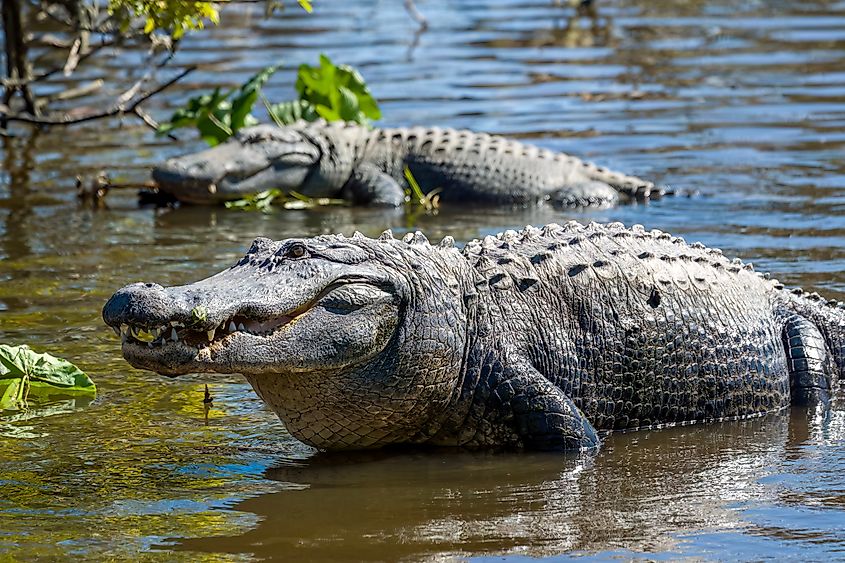
Alligators are usually found further south in places like Florida or Louisiana. However, these creatures have been found in ponds and wetland areas in the southern part of Alabama. They typically inhabit the marshes and swamps as you get closer to the Gulf Coast. However, alligators sometimes inhabit ponds, reservoirs, and lakes across the state.
Alligator attacks are most dangerous in the water because they are flexible and agile. However, they can be formidable if they attack on land as well. If one approaches you on land, try to remain calm and focus on getting to a safe place. Fighting back immediately can be crucial if you are attacked in the water. Aim for the animal's face, eyes, and nose. If you fight hard enough, the alligator will not think you are worth the energy and leave. Your biggest defense will be calling for help.
Bull Sharks
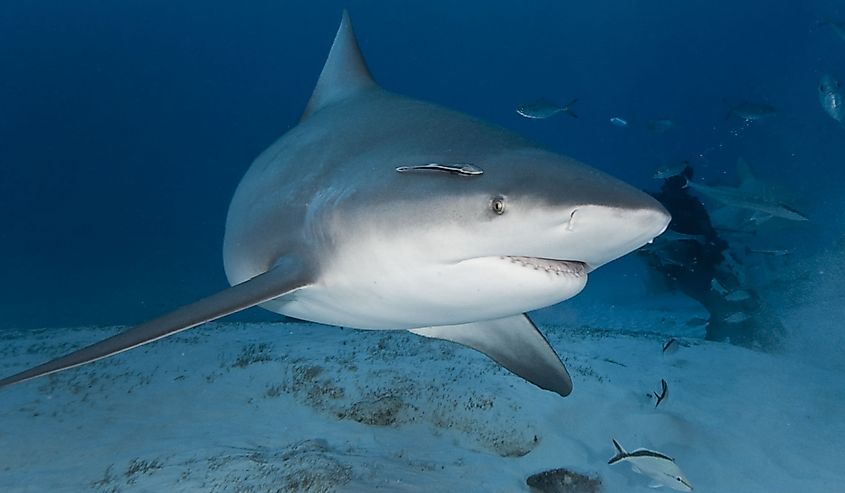
When you think of Alabama, you likely do not think about sharks. However, there have been many sightings and encounters with sharks in Alabama, especially in the waters off the coast. Several sharks have been found in Alabama waters from small nurse sharks to the intimidating great white. However, the most common are bull sharks.
Bull sharks are medium-sized but can grow as long as 12 feet and up to 500 pounds. They can survive in both saltwater and freshwater, making it possible for them to leave the ocean waters and swim up the river to places you would never expect to find them. They can be extremely aggressive and have been known to attack people on many occasions. An encounter with a bullshark can be life-threatening or leave you with injuries that may affect you for life. To avoid a bull shark attack, you can stay away from murky water, stay in groups since they are more likely to seek out prey alone, and avoid swimming at dawn or dusk when they are more likely to be active.
If you are attacked, acting quickly could be your only means of survival. Fight with all your strength. Hit the shark in the head, eyes, and gills. If you have anything in your hands, use it as a weapon. If the shark finds its prey hard to fight, it might move on. If the shark does let go, even for a moment, try to get to safety. Getting out of the water is the only way to stop the attack.
Conclusion
Alabama is a beautiful state with rewards for adventurers who enjoy camping, hiking, and fishing. The scenic beauty and charm of the state’s forests and waterways have much to offer. However, with that comes a few dangers that should not be taken lightly. When headed into the wilderness of Alabama, you must be aware of the possibility of encountering snakes, spiders, and mammals. That is their home, and you are going there uninvited. Being mindful of their presence and what to do in case you are attacked can be the difference between a fatal encounter and a story to tell later.











